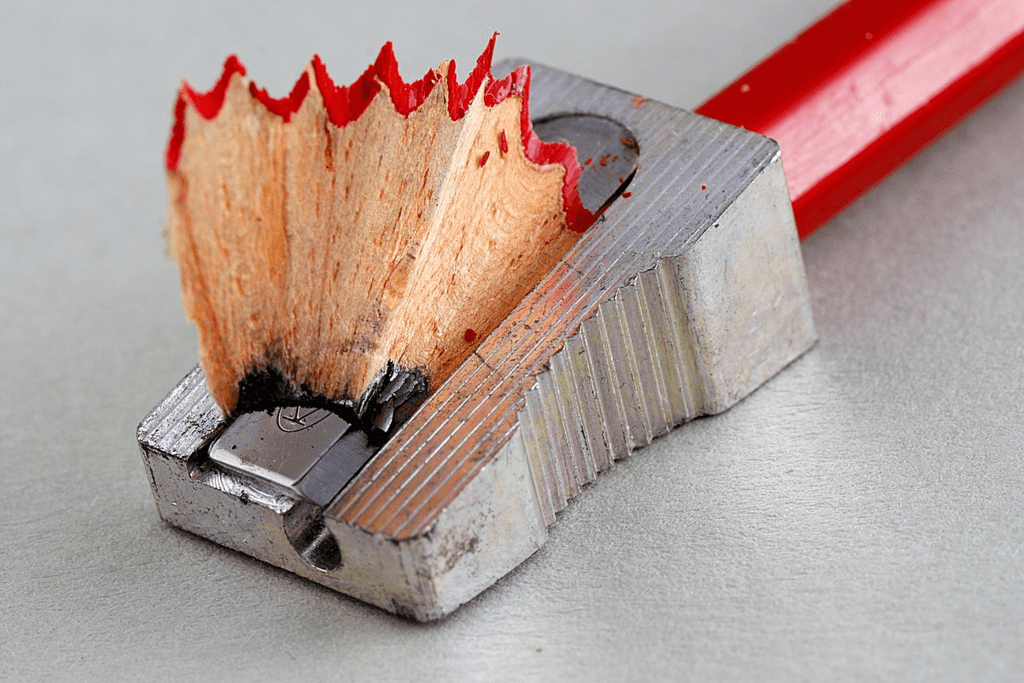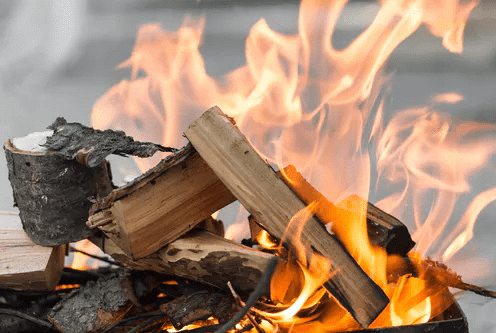Very Short Question Answers - Change around us - Class 6 PDF Download
Very Short Q & A
Q1: Some changes can be reversed, some cannot be reversed. (TRUE/FALSE)
Ans: True
Q2: If we sharp a pencil its length decreases. Can this change be reversed?
Ans: No
 Sharpening a Pencil is an Irreversible Change
Sharpening a Pencil is an Irreversible Change
Q3: After baking a roti on tawa, it is not possible to get back the ball of dough again. What type of change is this?
Ans: This is a change which cannot be reversed
Q4: A potter changes or shapes a lump of clay into a pot. Can this change be reversed?
Ans: No
Q5: Give an example of reversible change.
Ans: The shape and size of a balloon can be changed by blowing it.
Q6: A man is carrying a mirror. He suddenly drops a mirror and the mirror is broken. Can this change be reversed?
Ans: No
Q7: Raw egg is boiled. We can reverse this change. (TRUE/FALSE)
Ans: False
Q8: If we blow a balloon. The shape and size of a balloon have changed. This is a_____________ change.
Ans: Reversible
Q9: After making a ball with dough, a person rolls out a roti. Can he now change it back to a ball of dough?
Ans: Yes
Q10: A paper is changed into the shape of a bat by cutting it. What kind of change it is?
Ans: This is a change which cannot be reversed as the original dimension of paper cannot be obtained now.
Q11: A sheet of paper is changed into a toy aeroplane by folding it. This is a reversible change. (TRUE/FALSE)
Ans: True
Q12: Batter is changed into dosa. This is _____________.(reversible change/irreversible change)
Ans: Irreversible change
Q13: Cold milk is heated and it becomes hot. Which type of change it is?
Ans: Reversible change
Q14: A sheet of paper is folded to make an aeroplane. Then this paper is unfolded again. Is the size of paper the same as before or after making an aeroplane?
Ans: Yes
Q15: Bud to flower is a ___________ change.(reversible/irreversible)
Ans: Irreversible
 Bud to Flower
Bud to Flower
Q16: A copper wire is folded to form a loop. Can this change be reversed?
Ans: Yes
Q17: Wet clothes get dry. This is a reversible change because ______________.
Ans: They can again get wet if we put them in water.
Q18: By using woollen yarn a lady knitted a sweater. Can this change be reversed?
Ans: Yes
Q19: Milk to paneer is a reversible change. (TRUE/FALSE)
Ans: False
Q20: Biogas is prepared from cow dung. Can this change be reversed?
Ans: No
Q21: Metal expands on heating. (TRUE/FALSE)
Ans: True
Q22: If cold water is poured over a hot metal ring it___________ .(expand/contracts)
Ans: Contracts.
Q23: Water vapour changes into _________when it is cooled.
Ans: Liquid water
Q24: When metal ring is heated, it ___________.
Ans: Expands
Q25: When water is heated, it changes into _____________.
Ans: Water vapour
Q26: On lightening the candle the length of the candle decreases. Can this change be reversed?
Ans: Yes
Q27: A boy paints an apple on a piece of paper. Do you think that change in the piece of paper can be reversed?
Ans: No
Q28: Conversion of water vapour into liquid water is a _____________ change.
Ans: Reversible
Q29: Take a glass of water. Dissolve two teaspoons of sugar in it. These are changes in water which can _________. (Be reversed/not be reversed).
Ans: Not be reversed
Q30: A rope is tied around a box. The shape of the rope changes. What kind of change is this?
Ans: This is a reversible change.
Q31: When we burn a piece of wood, what changes occurs in it?
Ans: It turns into ash. It is not a reversible change.
 Wood turns into Ash on Burning
Wood turns into Ash on Burning
Q32: Can change due to dissolving salt in water be reversed?
Ans: Yes.
Q33: By heating a substance or mixing it with some other substance, changes may occur in it. (TRUE/FALSE)
Ans: True
Q34: Cooking changes the flavour of vegetables. Can we reverse this change?
Ans: No
Q35: All changes around us can be reversed. (TRUE/FALSE)
Ans: False
Q36: Evaporation of water is the reverse of condensation of water. (TRUE/FALSE)
Ans: True
FAQs on Very Short Question Answers - Change around us - Class 6
| 1. What is the importance of change in our surroundings? |  |
| 2. How does change affect our daily lives? |  |
| 3. Can change be difficult to accept? |  |
| 4. How can we adapt to change effectively? |  |
| 5. What are some examples of change in our surroundings? |  |















